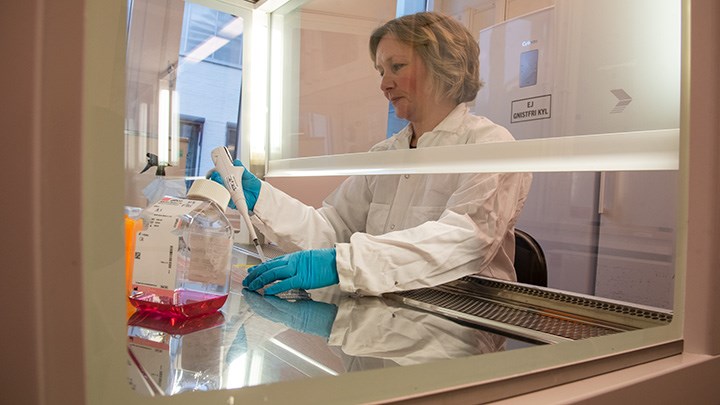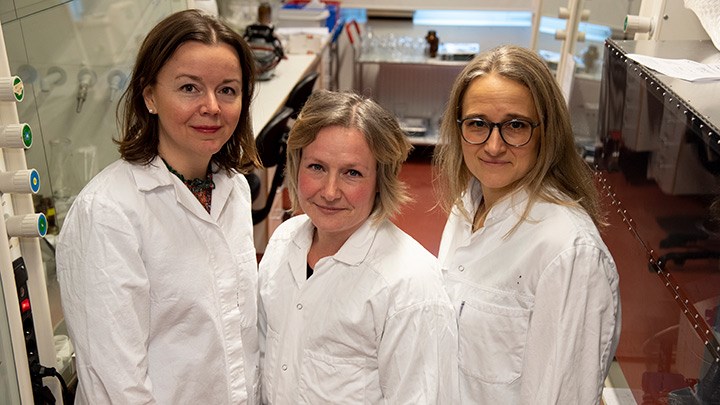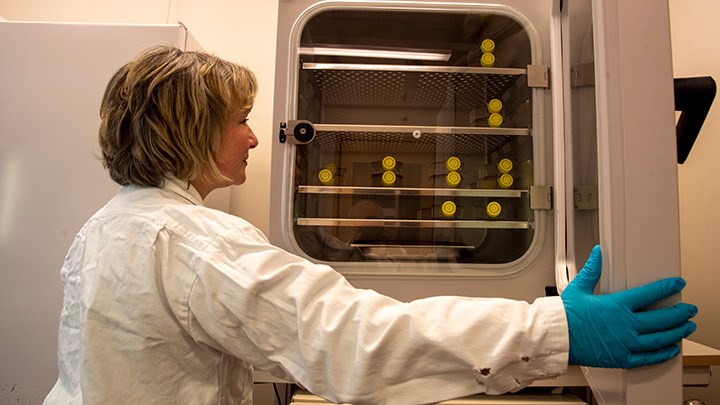Researching PFAS substitutes in outdoor clothing

New, PFAS-free outdoor clothing is being tested in a laboratory to determine how these substitute products might impact animals, nature, and humans.
Although hazardous PFAS chemicals are being phased out from outdoor clothing, the question is, what are they being replaced with? A new research project at Örebro University aims at finding out.
In recent years, a new marketing argument has been used within the clothing industry: PFAS-free garments. Both consumers and the EU have pressured companies to remove PFAS substances from clothing. However, what has replaced these hazardous chemicals may differ significantly from fabric to fabric.
Researchers in chemistry and business at Örebro University have received SEK 6.1 million in funding from the Marianne and Marcus Wallenberg Foundation to investigate PFAS substitutes in outdoor clothing – and what risks may exist with using these substitutes.
“We’re very excited to carry out this project. It’s an important matter and one that we can make a difference,” says business economist Sabina Du Rietz.
Using cultured human cells
Together with Ingrid Ericson Jogsten and Maria Larsson, both environmental chemists at Örebro University, they will investigate how clothing companies in the outdoor sector are phasing out PFAS substances and whether the substitutes used are harmful to animals, nature, and humans. Interviews with companies about what influences their decisions will be combined with laboratory tests.
In an incubator in a research laboratory, cultured human cells have been prepared for testing. They will be used for effect-based methods and toxicological modelling to measure the overall effect of substances – their cocktail effect. Using human cell cultures also means sidestepping testing on animals.
The cell tests will be combined with other methods to investigate toxicity levels and identify harmful substances. The investigation uses advanced chemical analysis and fractionation, dividing samples into reduced fragments.
“We can measure the total effect and test for individual substances or smaller fractions – a tremendous strong point,” explains Maria Larsson.
New proposal for a total ban
There are thousands of different chemicals collectively known as PFAS. These substances have beneficial properties, not the least in the clothing industry. And there is great demand for chemicals that repel water, grease or dirt from various garments.
However, PFAS substances also have been shown to include many harmful effects, like being difficult to break down, contaminating soil and water, and accumulating in the blood and liver of animals and humans.
Recently, the European Chemicals Agency (ECHA) has proposed what is essentially a ban on more than 10,000 substances currently included in the PFAS group. Such a ban could lead to significant changes over the next few years if approved by the European Commission and EU Member States.
“It’ll be very interesting to follow the affected companies during this process – as it’s make or break it for them now,” says Ingrid Ericson Jogsten.

Interested companies
With increasing pressure from consumers not wanting to buy clothes and articles treated with PFAS, some companies have already made efforts to find substitute products.
Substitute products are particularly evident in the companies’ marketing of durable outdoor clothing worn in natural environments.
“It’s a key reason why we’ve chosen the clothing industry, as these companies seek to be at the forefront,” says Sabina Du Rietz.
One problem with using new substitutes is that possible risks are unknown. This happened when certain plastic-coated materials faced competition from fabrics treated with PFAS. Neither were the risks sufficiently explored.
“Small children like to sit and play in puddles. So as a parent, it’s convenient to buy something that keeps your children dry while at the same time not sweating like crazy. But then ten years later, they might find out that those same chemicals end up in the child’s blood, affecting the child’s health negatively,” explains Ingrid Ericson Jogsten.

“It’s got to be tip-top protection.”
In the new research project, outdoor clothing will be tested in a laboratory environment. Interview studies will be conducted with related companies to learn more about how they operate and what influences their business decisions. Researchers will seek knowledge like whether subcontractors play a role, if consumers have increased demands, or if we have become accustomed to outer garments withstanding everything, even when only walking to work.
“It’s like all of us buying a jacket at one of these clothes chain stores are planning to climb Mount Everest. Like it’s got to be tip-top protection. On the other hand, we may want to wear the same jacket when hiking – even if we don’t need to,” says Sabina Du Rietz.
Research begins this summer and is expected to be completed in 2027.
Text and photo: Jesper Mattsson
Translation: Jerry Gray
